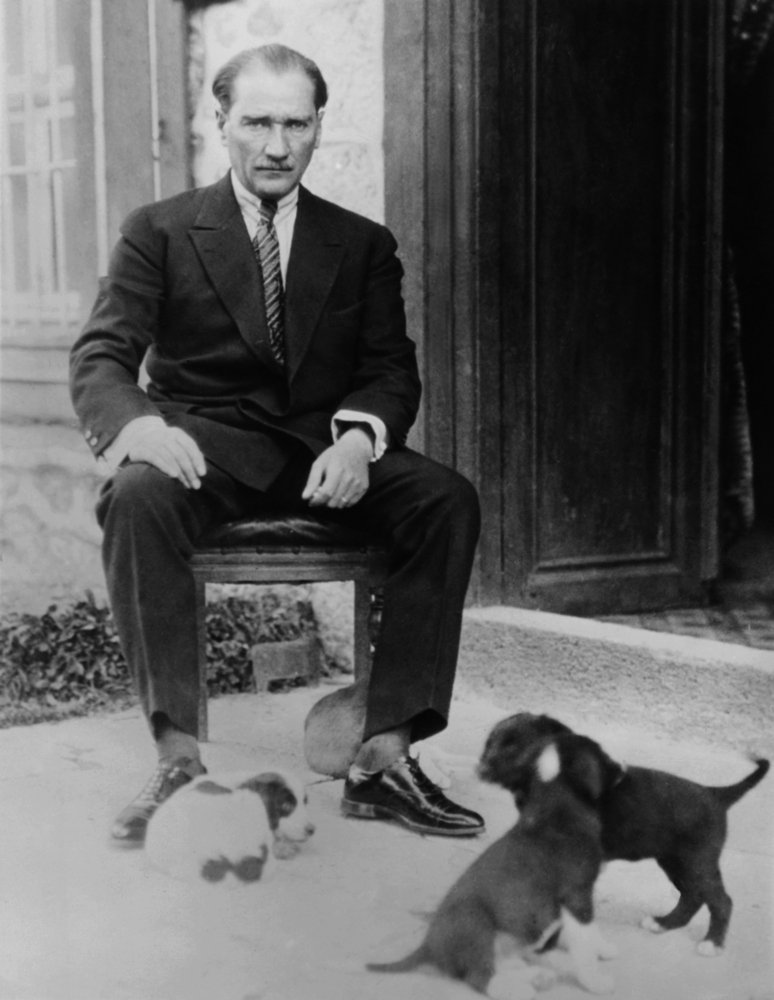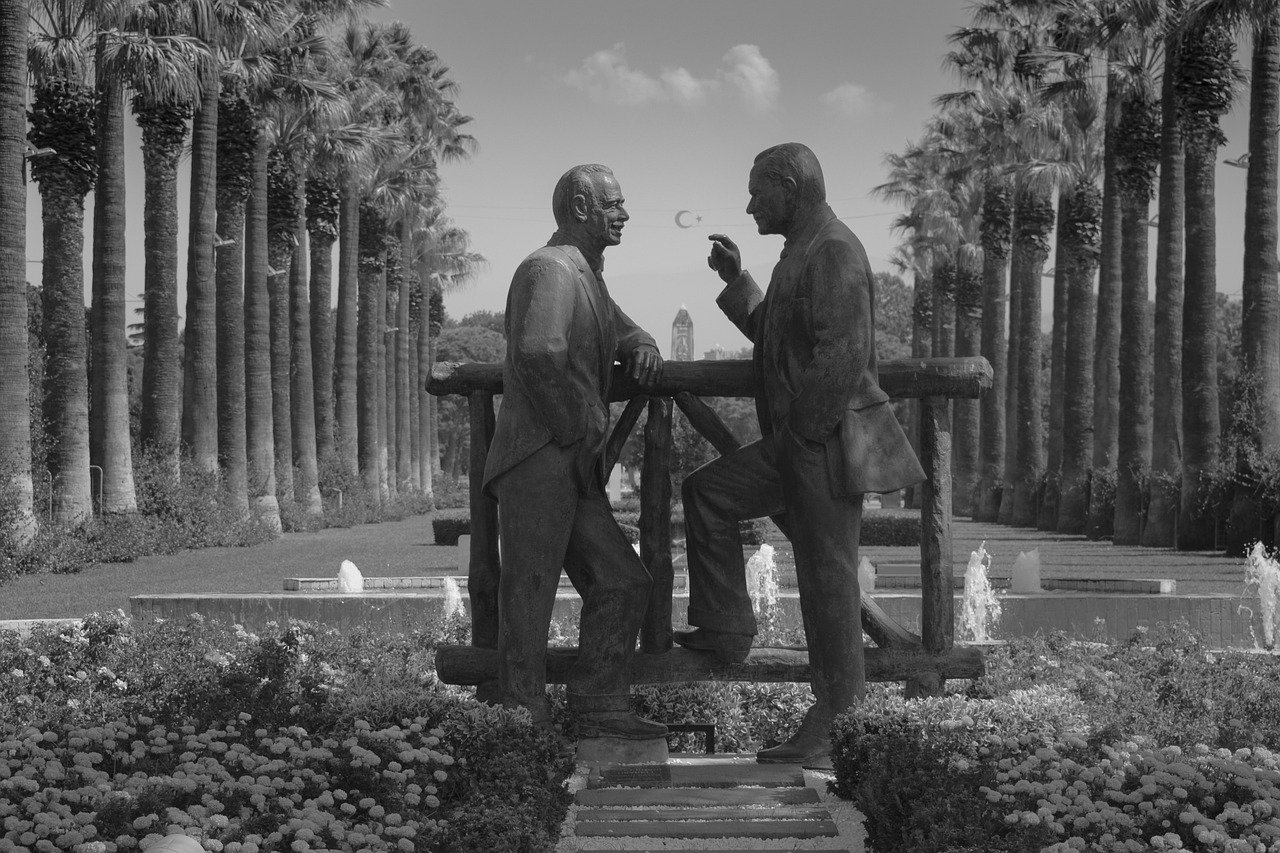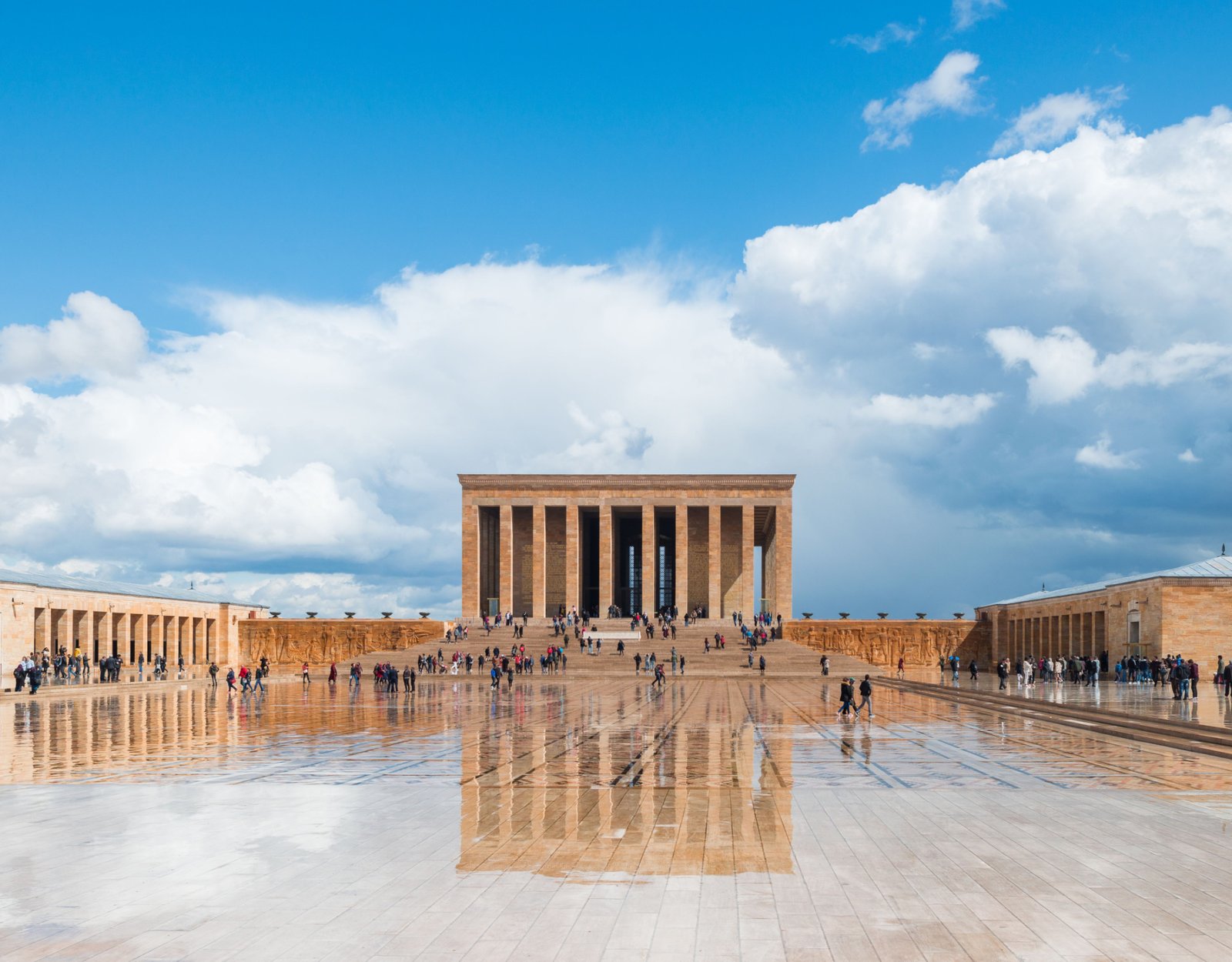LEARN MORE
Atatürk and Dolmabahçe Palace
Atatürk is regarded as the "father" of modern Turkey, and his ideas and legacy still shape the country's identity and ideals. Many Turkish people look up to him as a national hero because he had such a big effect on their country's politics, society, and culture.
MUSTAFA KEMAL ATATÜRK
Dolmabahçe Palace: A Monumental Legacy of Mustafa Kemal Atatürk
One of the most amazing examples of Ottoman splendour is the Dolmabahce Palace, which is located in Istanbul, Turkey. Additionally, it is a piece of architecture that has a strong connection to the life and legacy of Mustafa Kemal Ataturk, the leader who founded the Republic of Turkey and served as its first president. It is clear that Ataturk had a close relationship to Dolmabahce Palace, which is a significant indication of how he envisioned Turkey evolving into a modern and secular nation in the years to come.
Atatürk's Early Encounters with Dolmabahçe Palace
Dolmabahçe, an architectural marvel of the Ottoman Empire, came to represent the empire's transformation towards a more European aesthetic in the 19th century. With its magnificent exterior and ornate furnishings, the palace was the centre of government during a very important time in Turkish history.
There are stories of diplomatic meetings, political choices, and cultural exchanges that can be heard in the halls of Dolmabahçe. With its crystal chandeliers and gold-plated furniture, each room evokes the richness of the Ottoman court of the past. We feel like we're in the rich fabric of the past as we walk through the palace halls.
The first time Mustafa Kemal Atatürk saw Dolmabahçe Palace was when he was in Istanbul for military training. When he was a young soldier, he would often walk by the palace and be amazed by how big and powerful it seemed. This huge building would become very important in his life and in the history of Turkey, but he had no idea at the time.
Atatürk's Use of Dolmabahçe Palace as a Presidential Residence
Atatürk chose to live in Dolmabahçe Palace as his official presidential home when the Turkish Republic of Turkey were founded in 1924.
This decision wasn't just a reflection of his role as president; it was also meant to be a symbolic act. Atatürk knew that the palace had a lot of historical value and thought it could be a symbol of Turkey's change from an empire to a modern nation.
Beyond his physical presence, Atatürk had a connection to Dolmabahce Palace. The house shows what he did as president and how he helped make the modern Turkish Republic what it is today. There are physical reminders of his impact in his living quarters, the rooms where he held official meetings, and the palace grounds, where he interacted with the public.
Atatürk's Lifestyle and Initiatives at Dolmabahçe Palace
Dolmabahçe Palace was another location where Atatürk encouraged for the modernization of Turkey. He invited scientists, artists, and intellectuals to his home, which created an intellectual and culture atmosphere.
Ataturk also used the palace to show foreign leaders Turkey's progress and show how committed the country is to modernization and progress.
Atatürk's Final Days and Legacy at Dolmabahçe Palace
Atatürk began having health problems in 1938. He spent his last days at Dolmabahçe Palace, where he was joined by close companions and loyal servants. Atatürk died in the palace's Blue Room at 9:05 a.m. on November 10, 1938. He left behind a legacy that would forever shape Turkey's direction.
The room, which has been preserved as a moving memorial, exemplifies the simple way of life that was symbolic of Atatürk. His personal items and the fact that the clock stopped at the exact moment he died all give a strong sense of history. Dolmabahçe wasn't just a house; it was a holy place for the Turkish people and a link to their transforming past.
Dolmabahçe Palace as a Symbol of Atatürk's Vision
There is more than a historical connection between Atatürk and Dolmabahçe Palace. It shows the coming together of two different times: the Ottoman past and the Republican future. Atatürk's choice to live in Dolmabahçe Palace as president wasn't just a practical one; it was also a symbolic move that marked Turkey's change from an empire to a modern republic.
The Dolmabahçe Palace is a reminder of Atatürk's plans for Turkey's future. It shows how custom and modernization can work together, how historical heritage can be protected while progress and enlightenment are embraced. Not only does Atatürk's memory live on in the palace's beautiful architecture, but also in the way it stands for change and renewal.
Atatürk's Legacy within Dolmabahçe
There are more than just physical signs of Atatürk's presence at Dolmabahçe Palace. His ideas and plans for a modern, secular Turkey are woven into every part of the house.
People who come here can almost hear the echoes of Atatürk's talks, in which he talked about the future of the country while he negotiated the complicated issues of government from inside these walls.
Atatürk's past and the way he lived at Dolmabahçe Palace show his dedication to progress, education, and fairness. Atatürk's legacy goes on in the cultural institutions he built and the changes he made to education that will continue to affect Turkey's future.
Dolmabahçe: A Living Chronicle
When we look around Dolmabahçe Palace, we're not just walking through fancy rooms and halls. We are entering a living history book where Atatürk's life and events come together at Dolmabahçe Palace. The house acts as a link between the history of the Ottoman Empire and the start of modern Turkey.
To sum up, Dolmabahçe Palace is a live example of how rich Turkey's culture and history are. When you go there, you can hear the sounds of the past mixed with the ideas of a great leader.
The past and way of life of Atatürk at Dolmabahçe Palace are not just stories that you read in schoolbooks; they are a part of what makes a country unique. We are told that history is not static as we walk through the halls of Dolmabahçe. It is alive with the spirit of those who dared to dream of a better future.
Things to Know About Mustafa Kemal Atatürk
As the leader responsible for establishing the Republic of Turkey and serving as its first president, Mustafa Kemal Atatürk is greatly revered throughout Turkey. His impact can be felt in multiple crucial domains
>> For more information about the Dolmabahçe Palaces history
Military Leader
- Led the Turkish War of Independence (1919-1922) against the Allied powers, winning victory and preventing the Ottoman Empire's division.
- Highly regarded as a smart military strategist and tactician, he was given the nickname "Gazi," which means "veteran," for his bravery and guidance.
Founder of Modern Turkey
- The Republic of Turkey was established in 1923, ending the Ottoman Empire and ushering in a new period of national sovereignty and secularism.
- As the Republic of Turkey's first president, he managed important reforms in a variety of disciplines.
- These reforms attempted to modernise and break with the Islamic Ottoman past.
Reformer
- Education: Free and mandatory basic education, Latin alphabet, and secular schools.
- Law and Governance: Created a constitution, Western-style legal system, and democracy.
- Women's Rights: Pioneered regional gender equality with full suffrage and other civil and political rights.
- Economy: Industrialization and modernization reforms laid the groundwork for Turkey's economic prosperity.
Atatürk's Legacy
- Kemalism, the official state ideology, is based on the secularism, republicanism, and populism of Atatürk and is still prevalent in Turkish society.
- International recognition of Atatürk's leadership and policies helped shape Turkey's identity.
- Atatürk is still regarded as a crucial figure in Turkish history, shaping the nation's political environment and sense of identity in spite of differing opinions.











Top Bestseller Dolmabahçe Palace Ticket
Get ready for an unforgettable experience at the lavish Dolmabache Palace located along the Strait of Istanbul. With fast track admission and audio guides, enjoy an insightful tour of the world-renowned palace! + more details
Most Preferred Combo Tickets
Save on 2 Istanbul must-dos! Enjoy a Bosphorus dinner cruise with unlimited drinks and skip lines to Dolmabahce Palace, ideal for culture vultures. + more details
Includes:
- Entry to Dolmabahçe Palace and Harem with skip-the-line access
- Audio guide for Dolmabahçe Palace (available in 10+ languages)
- 90-minute Bosphorus cruise with multilingual audio guide (5+ languages)
Combo: Dolmabahçe Palace Skip-the-Line Tickets with Audio Guide + Hagia Sophia Skip-the-Line Tickets
Discover Istanbul's gems: gain priority access to Dolmabahçe Palace (with an enriching audio guide) and the magnificent Hagia Sophia. + more details
Best Value Combo Pass
With this pass, visit 2, 4 or 10 major attractions, enjoy the Blue Mosque, cruise the Bosphorus and access public transport for hassle-free sightseeing in Istanbul. Enjoy Mega Savings and Mega Value! + more details
Frequently Asked Questions About Atatürk
In his life, Mustafa Kemal Atatürk was a soldier, politician, and rebel leader. He started the Republic of Turkey and was its first president. People look up to him as the "father" of modern Turkey because he led the country through the Turkish War of Independence and then made changes that made the country more modern.
After World War I, the Allies took over parts of the Ottoman Empire. Atatürk became the leader of the Turkish fight against them. He was in charge of several successful military operations, the most important of which was the decisive victory at the Battle of Dumlupınar in 1922. This win protected Turkey's independence and kept the Ottoman Empire from falling apart.
The impact of Atatürk is complicated and debated. Many people respect his ability to lead, his vision, and his commitment to the Turkish people. But he is also criticised for being too authoritarian and for making it hard for people to speak out against him while he was in power.
No matter what, Atatürk is still a very important person in Turkish history. Secularism, republicanism, and populism were some of his main ideas that still shape Turkish society and are at the heart of Kemalism, the country's official philosophy.
After the Republic of Turkey was officially formed in 1923, Atatürk started living in Dolmabahce Palace as his summer home. Until his health got worse in 1938, he would work and rest at the palace during the summers. He spent his last days at the house and died there on November 10, 1938.
- Location: The house was on the European side of the Bosphorus Strait, so it had beautiful views and a nice breeze in the summer.
- Length: Atatürk had plenty of room to work, hold official meetings, and treat guests on the large grounds and in the many rooms.
- Symbolism: Dolmabahce Palace stood for the splendour and power of the Ottoman Empire. Atatürk wanted to bring it up to date while keeping its historical value.
Atatürk had a simple room in the part of the house that used to be the harem. This choice showed how simple his life was and how much he disliked showing off his money. He also did business in a number of other rooms, such as:
- The Yellow Drawing Room is where state leaders and foreign dignitaries meet.
- The Red Drawing Room: This is where public receptions and social events are held.
- The Council Chamber: Was for where meetings with advisers and cabinet members take place.
